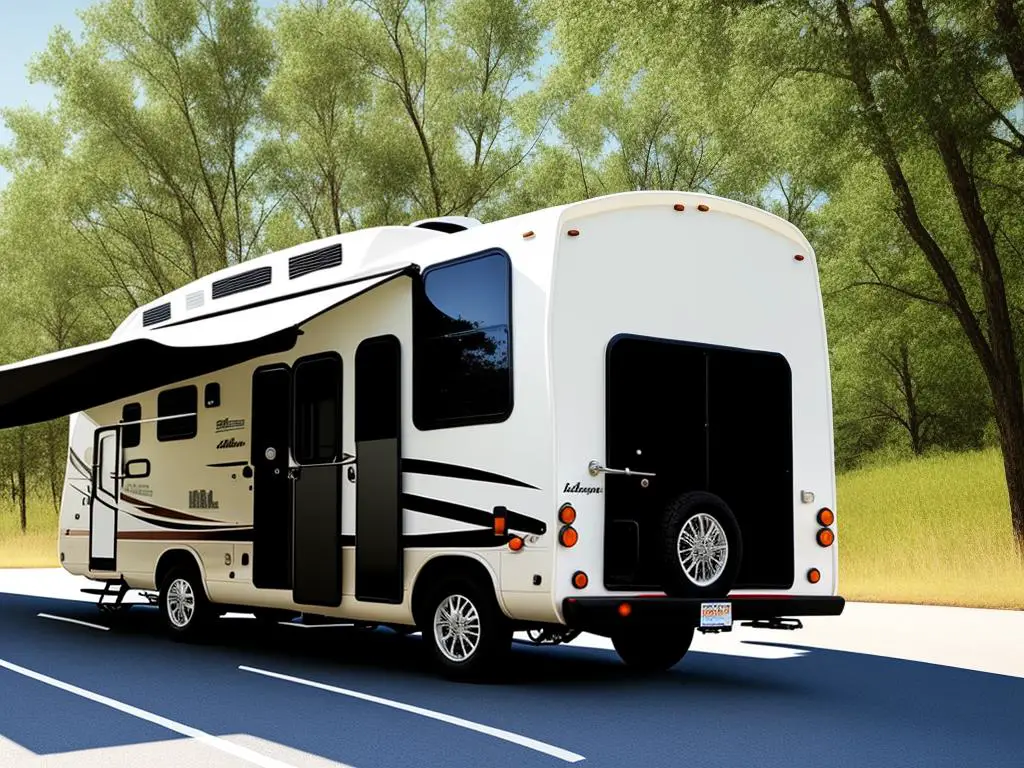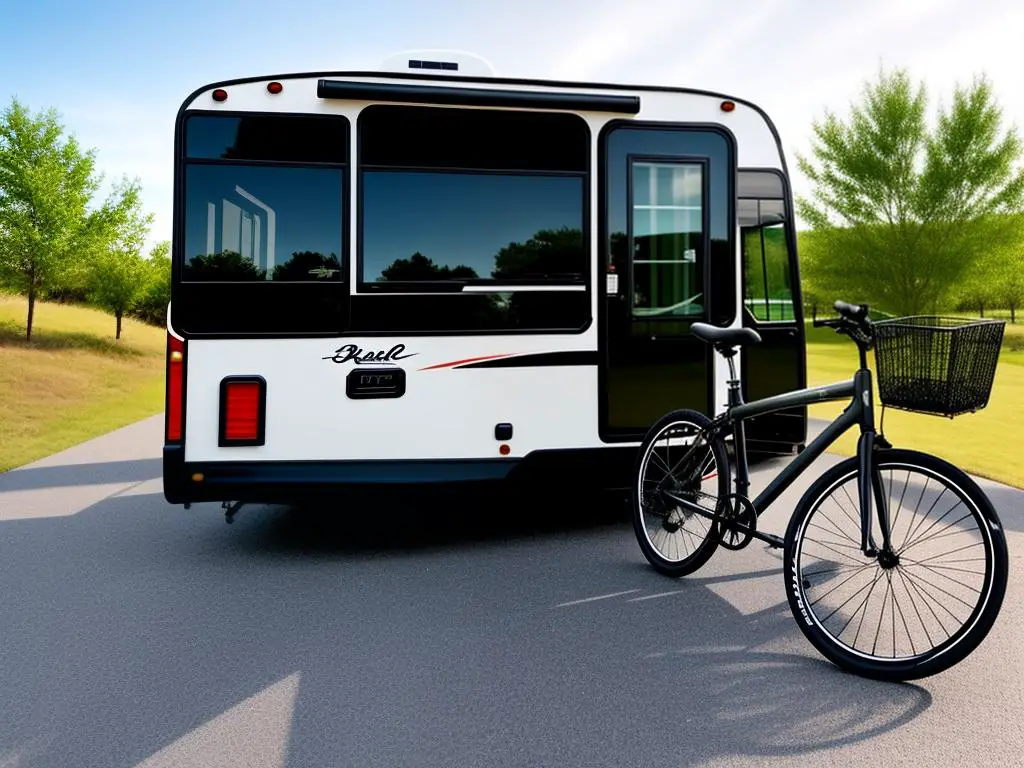Efficient Ways to Store Bicycles in Your RV
Bicycling is not only a fantastic form of exercise, it’s also a brilliant way to explore new landscapes when you’re out and about in your RV. With the right equipment and precautions, bicycle transport can be simple, efficient, and stress-free. This paper will delve into the basic principles and best practices of storing bicycles to keep them in pristine condition, investigate a variety of bike racks optimised for use in recreational vehicles and lay out the process of their installation and maintenance. From understanding stability requirements to identifying space-saving techniques, we will equip you with the necessary knowledge to safely transport your bicycles in your RV.
Understanding the Basics of Storing Bicycles
Introduction to Bicycle Storage in Your RV
Understanding how to properly store bicycles in your RV can be quite the conundrum for some, especially for those who value their two-wheeled companions. The task itself of ensuring their safety and protection during transit spells out crucial considerations surrounding stability, space-saving, and thwarting potential damage. Fear not, the answer is not as elusive as you might initially perceive.
Prioritising Stability
Firstly, the stability of your bicycles when housed within your RV is of paramount importance. The main risk being that your precious cycles might come crashing down whilst on the road, causing damage not only to the bicycle itself but also potentially to the interiors of your RV.
To avoid this predicity, be sure to secure your bicycles firmly using suitable straps or braces. Opt for straps that are robust and durable, with a locking mechanism if possible, and ensure that all points of contact are padded to prevent damage from friction. However, straps should not be over tightened as this can lead to warping or bending of your bicycles.
Implementing Space-Saving Techniques
Next on the agenda is the effective maximisation of your limited RV space. Bicycles are notorious space-hogs. To tackle this issue, several solutions are at your disposal.
Consider vertical bike racks that allow for your cycles to be hung off the floor, thus freeing up valuable square footage. Another option is to employ a double decker bike rack which provides two levels for storage. Also consider removing either the front or both wheels of your bicycles to further save space.
Protecting Your Bicycle from Damage
The final concern is to protect your bicycle from unwanted scratches, dents, or worse, while in transit. Your options here range from simple bike covers to more elaborate solutions, such as padded bicycle travel bags.
For ultimate protection, consider a hard-shell bicycle case. These offer optimum defence against impact but are usually more expensive and take up considerably more room. A cheaper and more convenient solution might be foam tube insulation which can be purchased from hardware stores. This can be cut to size and fixed to your bicycle frame.
To conclude
Ensuring your bicycles are securely stored in your RV is fundamental to protect your investment. By using the right tools and techniques, you can certainly animate this task. It is strongly recommended to allocate time to prepare before each journey, so your bicycles are always ready to go when you arrive at your destination.

Exploring Suitable Bike Racks for RVs
Exploring the World of Bike Racks for RVs
Amongst the vibrant clamour of the campground, the rumble of RVs is a familiar sound to us all. Often seen meandering through our winding roads, these homes on wheels bring shelter, comfort, and convenience to nomadic adventurers. For those of us who enjoy the rhythmic pedalling of a bike ride in the great outdoors, it’s crucial to learn about storing our bicycles on these mobile abodes. Today our focus will be exploring suitable bike racks that harmonise perfectly with our RVs, diving into their salient features, the process of installation, their cost, and where they may be procured.
Key Features: Size, Capacity, Ease of Use and Durability
When scouring the market for the ideal bike rack for your RV, there are multiple aspects to consider. Ensure you ponder over the size of the rack; it should fit perfectly onto your vehicle without taking too much room nor hindering any functionality of the RV. The capacity of the rack is a crucial factor – it must comfortably hold the number of bicycles intended to transport.
Other prime factors to note are the ease of use and durability. Ask yourself, how effortlessly can your bicycles be mounted and removed from this rack? The durability and sturdiness of the rack are equally important as you wouldn’t want to risk damage or loss of your bicycles during your well-deserved adventures or holidays.
Research and Pricing
Through comprehensive research, discover the various types of racks on offer. There are rear bike racks, ladder-mounted racks, and even bumper-mounted racks – each with their distinctive features and advantages. Talk to other RV users, bicycle enthusiasts, or even staff at outdoor sports equipment shops to gather diverse opinions and suggestions.
Based on the feedback obtained, you should then explore the pricing of these racks, considering factors such as brand reputation, material used, and the included warranty. Keep in mind the budget you are willing to spend and remember that whilst cheaper options may be alluring, they may not necessarily possess the durability or quality you require.
Purchasing Your Bike Rack
Once you’ve done copious amounts of research and have a fair idea of the type of rack you need, the final step is to purchase your selection. Many outdoor equipment stores can provide an array of choices, and staff can assist personally. However, if you fancy shopping from the comfort of your abode, numerous online outlets can offer home delivery.
Just remember, whatever method you choose to acquire your bicycle rack, ensure it has a return policy in case the product doesn’t fit your specifications or fulfill your expectations.
In the end, the joy of exploring new cycling trails should not be marred by the worry of how to transport your bicycles. By diligently researching and choosing a compatible bike rack for your RV, you can ensure that your bicycles are safe and secure, freeing you to relish every moment of your cycling adventure.

Installation and Maintenance of Bicycle Racks
A New Home for Your Bicycles: Installing a Bicycle Rack in Your RV
First and foremost, as an earnest individual seeking to explore the world with your RV and bicycle, it is essential to have the correct equipment to ensure the safe and efficient transportation of your bikes. Your bicycle is not just a means to an end, but a companion in your adventures. And this, my dear reader, is where the installation of a bicycle rack comes into play. Let us embark on this journey of making your RV a comfortable dwelling for your bikes.
Choosing the Bicycle Rack
Before we move on to the actual installation process, let’s talk about the best bicycle rack one could possess for an RV. A commonly preferred option would be a bumper-mounted bike rack or a hitch-mounted carrier. Make sure it fits snugly and securely, supports the bike’s weight, and doesn’t obstruct any access points. Take into account the size and design of your bikes since these factors will determine the style of your rack.
Placement and Installation
Once you’ve chosen a high-quality rack that suits your needs, planning the placement of the bicycle rack is the next critical step. Seek an area inside the RV that optimizes space utilization without causing impedance while moving within the RV. The rear part of the RV is usually preferred.
Now, we’re on to the installation process which requires an eagle eye and a keen sense of precision. The instructions provided by the manufacturer are your guiding light. Follow them to the letter to ensure that your bike rack is installed correctly and securely.
Take note, esteemed reader, it is often advisable to have an assistant handy, solely for the heavy lifting and an additional set of eyes. Ensure the rack is affixed securely, the bolts tightened, and the bikes fit snugly, swaying lightly at the most when the RV moves.
Preventive Measures
When you are done with the installation, take the time to secure the bikes using bike locks or straps, preventing any unseemly movement during your travels.
Maintenance and Care
Once you’ve installed a bike rack inside your RV, it doesn’t end there. Keeping your bike rack in top shape is the key to its longevity. Regularly check the rack for any loose bolts or parts and tighten them as necessary.
Ensure to clean the rack regularly and apply a rust inhibitor to prevent corrosion, primarily if used in varied weather conditions.
Also, remember to inspect your bikes and the alignment of the rack after every travel. In case of an accident or sudden jolt, the alignment can be thrown off balance. Make sure your bikes are always secure and intact.
Parting Thoughts
Learning to install and maintain a bicycle rack in your RV is a brilliant and necessary skill for an ardent adventurer like yourself. This endeavor doesn’t just involve the mechanical aspect; it requires vigilance and conscientiousness. Therefore, always keep an attentive eye on your bike rack, ensuring its stability and security. It will, unquestionably, pave the way for many enjoyable and unburdened adventures.
I wish you luck in your forthcoming journey, my dear reader. May the wind be always at your back and the sun upon your face.

The essence of a peacful journey lies in its preparation. Ensuring your bikes are securely installed and properly maintained is a pivotal part of this process. Following the knowledge shared, you should now be aware of the fundamental principles of storing bicycles in RVs, the diverse range of suitable bike racks available and the practicalities of their installation and upkeep. This knowledge when applied will pave the way for remarkable journeys as you effortlessly manoeuvre your RV with your bikes, being ready to seize any adventurous bicycling opportunity at your next destination.
